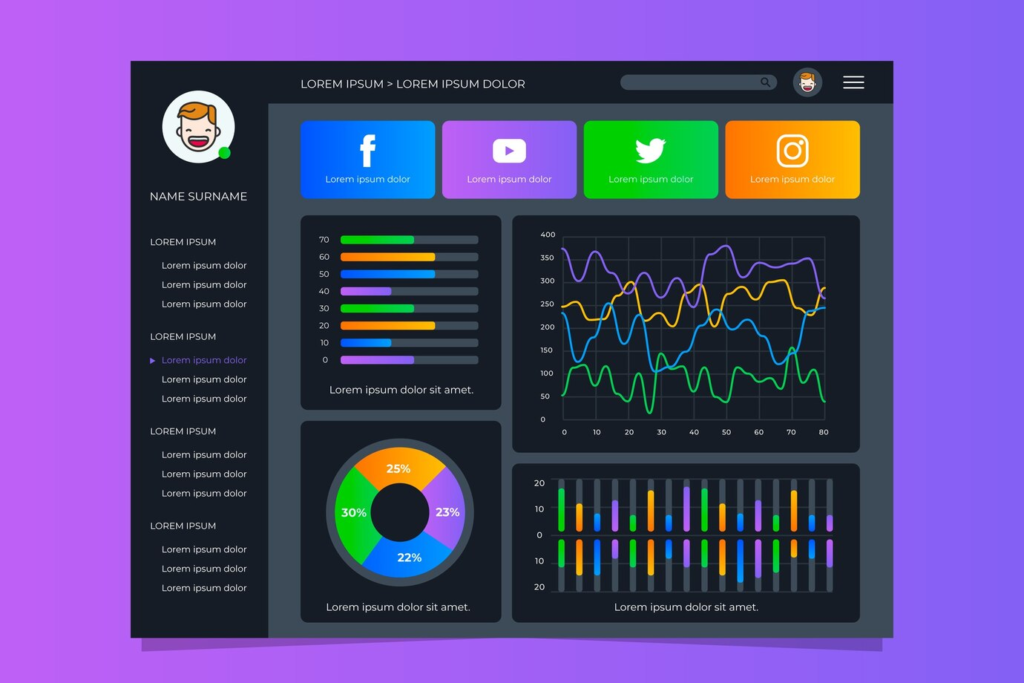Understanding the B2B E-Commerce Landscape
The B2B e-commerce environment has undergone significant transformation in recent years, driven largely by advancements in technology and changing market demands. Businesses are increasingly recognizing the value of establishing a robust online presence. Unlike B2C e-commerce, which typically focuses on individual consumers and their preferences, B2B e-commerce caters to companies engaging in transactions with other companies. This relationship dynamism requires a different approach to effectively meet the needs of institutional buyers.
Current trends in B2B e-commerce include the rise of online marketplaces, automation of procurement processes, and the integration of artificial intelligence to enhance customer experiences. Additionally, the increasing need for personalization and customization in purchasing decisions has led to the development of tailored solutions that cater to specific industries. Businesses are striving to provide seamless omnichannel experiences, addressing the need for cross-platform accessibility that modern buyers expect.
Yet, the B2B landscape presents unique challenges that differentiate it from B2C platforms. One notable challenge is the complexity of the sales cycle, which often involves multiple stakeholders and lengthy decision-making processes. Furthermore, the necessity to provide extensive product information, alongside complex pricing structures and bulk order management, complicates e-commerce operations. Consequently, B2B businesses must navigate a landscape defined by long-term relationships, trust-building, and intricate logistics.
To remain competitive, adopting a scalable e-commerce model is paramount. This adaptability allows businesses to respond effectively to fluctuating market demands and customer expectations. Scalability ensures that as a company grows and diversifies its offerings, the e-commerce platform can expand in tandem, maintaining efficiency and functionality. Thus, understanding the distinct characteristics of the B2B e-commerce landscape is essential for businesses aiming to thrive in this digital age.
Assessing Your Current E-Commerce Platform
Evaluating your existing e-commerce platform is a critical step in determining its scalability and overall effectiveness. The first aspect to consider is performance metrics, as these indicators provide insights into how well your platform is functioning and where improvements may be necessary. Analyze key parameters such as page load times, bounce rates, conversion rates, and transaction success rates. Monitoring these metrics regularly will help you understand your platform’s current capabilities and limitations.
In addition to performance metrics, examining the user interface (UI) is vital for assessing how users engage with your online store. A well-designed UI can significantly enhance user experience, thus potentially increasing sales. Evaluate whether your current platform allows for easy navigation and clear product representation. Ensure that elements such as search functionality and product filters are intuitive and user-friendly, as these components are crucial for a smooth shopping experience.
Moreover, backend technology must also be scrutinized, as it underpins the platform’s performance and scalability. Assess whether your current infrastructure can support increased transaction volumes and traffic spikes. Technologies such as cloud-based solutions can provide additional flexibility and capacity, allowing your business to adapt to growing demands without compromising performance. Furthermore, ensure that your backend system can seamlessly integrate with third-party tools and software to enhance functionality.
Finally, consider the overall user experience across multiple devices, as today’s consumers frequently shop on smartphones and tablets. Your e-commerce platform should offer a responsive design that maintains functionality and aesthetics across various screen sizes. Evaluate customer feedback and usability testing results to pinpoint areas requiring improvement. By thoroughly assessing your existing e-commerce setup, you can accurately identify scalability limitations and determine whether it is time to scale or upgrade your platform.

Choosing the Right Technology Stack
Scaling a B2B e-commerce platform requires careful consideration of the technology stack that powers it. The right technology stack not only supports current business operations but also facilitates future growth. When selecting an e-commerce solution, businesses must evaluate various factors such as scalability, customization capabilities, integration options, and cost-effectiveness.
There are several popular platforms available that cater specifically to the needs of B2B e-commerce. Solutions like Magento, Shopify Plus, and Salesforce Commerce Cloud offer a range of features tailored to enterprise-level requirements. Magento, for instance, is celebrated for its flexibility and extensive customization options, allowing organizations to create a tailored shopping experience. However, it may require a robust hosting environment and technical expertise, which can be a limitation for some businesses.
Shopify Plus, on the other hand, is known for its ease of use and rapid deployment capabilities. It provides a solid foundation for merchants looking to launch quickly without sacrificing functionality. Nevertheless, while its straightforward interface is appealing, it may lack the extensive customizability that certain enterprises demand. Salesforce Commerce Cloud integrates seamlessly with other Salesforce products, which can be a great advantage for users already within that ecosystem, yet it often entails higher costs and complexity.
When determining which technology stack is suitable, it is imperative to align the chosen platform with overall business goals and specific customer needs. Consideration should be given to expected traffic volumes, product catalogs, and the need for personalized customer experiences. Additionally, integrating with existing systems such as ERP and CRM can significantly enhance operational efficiency. Ultimately, ensuring that the chosen technology stack is adaptable and capable of supporting growth will be instrumental in achieving long-term success in the competitive B2B e-commerce landscape.
Optimizing Supply Chain Management
In the context of scaling a B2B e-commerce platform, optimizing supply chain management is essential for maintaining efficiency, reducing costs, and ensuring timely delivery of products. Effective inventory management is a fundamental component. Businesses should adopt advanced inventory management systems that provide real-time data on stock levels and demand projections. This approach allows for better decision-making, minimizes the risk of overstocking or stockouts, and aligns inventory with market trends.
Establishing strong vendor relationships also plays a critical role in supply chain optimization. Collaborative partnerships with suppliers enable better communication and coordination, which can lead to more favorable terms and quicker response times. Regularly reviewing vendor performance, coupled with open lines of communication, will foster an environment of trust and reliability. It can also enhance negotiation opportunities, resulting in cost savings that can be passed on to customers.
Logistics solutions are another key aspect of effective supply chain management. As B2B e-commerce businesses scale, it is vital to explore multiple logistics options. This might include engaging third-party logistics (3PL) providers to manage warehousing and transportation, thereby allowing the business to focus on its core competencies. Implementing technology-driven logistics software can further optimize shipping routes, reduce transit times, and provide comprehensive tracking capabilities. These improvements not only reduce operational costs but also enhance customer satisfaction through timely deliveries.
Moreover, adopting data analytics to assess supply chain performance can provide actionable insights for continuous improvement. By analyzing patterns in customer demand and supply dynamics, businesses can optimize their procurement and distribution strategies. Ultimately, by prioritizing these best practices in supply chain management, B2B e-commerce platforms can significantly enhance their service quality and operational efficiency as they scale.

Enhancing Customer Experience
In the highly competitive landscape of B2B e-commerce, enhancing customer experience is paramount to fostering loyalty and ensuring long-term business relationships. One of the most effective strategies is the implementation of personalized offerings, which cater specifically to the individual needs of clients. By utilizing data analytics and customer insights, businesses can tailor their product recommendations and marketing efforts to reflect the purchasing behaviors and preferences of each client. This level of personalization not only makes the purchasing process more convenient but also reinforces the value of engaging with a brand that understands its clients.
Another essential component of improving customer experience is ensuring user-friendly navigation across the e-commerce platform. A well-structured website layout, intuitive search functionality, and streamlined checkout processes contribute to a seamless shopping experience. It is crucial to minimize any barriers that may disrupt the customer’s journey, as complexities in navigation can lead to frustration and decreased engagement. By investing in a responsive design that accommodates various devices, businesses can further enhance accessibility, allowing customers to engage with the platform any time and from anywhere.
Moreover, robust customer support systems play a vital role in enriching the overall experience. Providing multiple channels for assistance—be it live chat, email support, or dedicated account managers—demonstrates a commitment to client satisfaction. Quick response times and knowledgeable representatives can significantly mitigate issues that arise and reinforce trust between the business and its clients. As a result, by prioritizing customer experience through personalized strategies, intuitive navigation, and responsive support, B2B e-commerce platforms can effectively drive retention rates and cultivate lasting relationships that are beneficial for both parties involved.
Implementing Advanced Data Analytics
In the modern B2B e-commerce environment, leveraging advanced data analytics is vital for businesses aiming to scale effectively. One of the first steps in this process is identifying and monitoring key performance indicators (KPIs). KPIs provide measurable values that demonstrate how effectively a company is achieving its key business objectives. For instance, tracking metrics such as sales growth, customer acquisition cost, and average order value can help identify opportunities for improvement and inform strategic decisions.
Another crucial aspect of advanced data analytics is customer segmentation. By analyzing customer data, businesses can categorize their customers based on buying behavior, preferences, and demographics. This segmentation allows for more personalized marketing strategies, which can lead to enhanced customer experiences and increased loyalty. Utilizing tools that provide insights into customer patterns enables companies to target specific groups effectively, ultimately maximizing their marketing efforts and resources.
Sales forecasting is also an essential component of data analytics in scaling a B2B e-commerce platform. By utilizing historical sales data and analytical models, businesses can predict future sales trends. Accurate sales forecasts allow companies to plan inventory, manage supply chain operations, and allocate resources efficiently. This predictive approach not only supports proactive decision-making but also enhances operational efficiency across the organization.
Implementing a data-driven strategy enhances overall operational efficiency. By continuously analyzing data, businesses can identify inefficiencies in their processes, optimize resource allocation, and improve customer satisfaction. Embracing advanced data analytics not only equips companies with the knowledge needed to make informed decisions but also positions them to navigate the complexities of scaling in a constantly evolving marketplace. With a commitment to leveraging data effectively, B2B e-commerce platforms can gain a competitive advantage and achieve sustainable growth.
Integrating Automation and AI Technologies
In the rapidly evolving landscape of B2B e-commerce, the integration of automation and artificial intelligence (AI) technologies plays a pivotal role in scaling operations effectively. Automating repetitive tasks not only enhances efficiency but also allows employees to focus on strategic initiatives that drive growth. Tools that enable automation are diverse and can be applied across various aspects of the e-commerce platform, from order processing and inventory management to customer service and marketing outreach.
For instance, robotic process automation (RPA) can streamline mundane tasks such as data entry and invoice processing, significantly reducing human error and processing time. Additionally, customer relationship management (CRM) systems that incorporate automation capabilities can personalize communication and follow-ups, ensuring that potential leads are nurtured promptly without manual intervention.

On the other hand, AI technologies provide B2B e-commerce platforms with the ability to leverage predictive analytics. By analyzing historical data, AI can forecast customer behaviors, demand trends, and inventory needs. This predictive capability helps businesses to optimize their supply chain and minimize stockouts or overstock situations, ultimately improving their bottom line. Furthermore, AI-driven chatbots can enhance customer service by providing 24/7 support, addressing common inquiries, and guiding customers through complex purchasing processes.
By integrating these advanced technologies, B2B e-commerce platforms can create a seamless customer experience. Automation ensures a faster transaction process, while AI capabilities lead to improved personalization and timely interactions. Consequently, harnessing the power of automation and AI not only streamlines internal processes but also strengthens relationships with customers, paving the way for sustainable growth in an increasingly competitive market.
Adapting to Market Changes and Customer Feedback
In the rapidly evolving landscape of B2B e-commerce, businesses must prioritize flexibility to effectively scale their platforms. This adaptability hinges on the ability to modify strategies in response to market dynamics and customer feedback. Understanding the ever-changing preferences of clients and the competitive environment is key to ensuring long-term success and growth. Organizations can achieve this by implementing various methods for collecting customer insights, which should inform product development and service delivery.

One effective approach to gathering customer insights is through surveys and feedback forms. By soliciting direct input from clients, businesses can identify specific areas for improvement and gauge satisfaction levels. Additionally, conducting regular interviews with key clients can elucidate their ongoing needs and help unveil potential opportunities for new product or service offerings. Utilizing analytics tools to track customer behavior on the platform can provide data-driven insights into user preferences, allowing companies to make informed adjustments to their e-commerce strategies.
Moreover, agile methodologies can facilitate timely adaptations in response to market changes. These iterative processes encourage frequent evaluation and modifications based on the latest customer feedback and market conditions. Embracing rapid prototyping and testing enables businesses to refine their offerings, ensuring they meet the evolving demands of their customer base. Creating a culture that values feedback and encourages proactive changes can lead to enhanced customer loyalty and retention.
Incorporating customer feedback into the product development cycle is not merely an operational requirement; it is an opportunity to foster innovation. By actively engaging with clients and demonstrating responsiveness to their desires, companies can solidify their reputation in the B2B space. Taking these steps to adapt continuously lays a strong foundation for scaling a successful e-commerce platform, ensuring that businesses can navigate the complexities of the market effectively.
Future-Proofing the E-Commerce Strategy
In the fast-evolving domain of B2B e-commerce, future-proofing one’s strategy is essential for sustained growth and competitive advantage. This involves not only adopting the latest technological advancements but also being attuned to shifting market dynamics and customer expectations. By staying informed about industry trends, businesses can adjust their approaches in ways that resonate with current and prospective clients.
One crucial aspect of future-proofing is the integration of emerging technologies. As artificial intelligence, machine learning, and big data analytics continue to gain traction, B2B companies can leverage these tools to personalize their offerings, streamline operations, and enhance the customer experience. For instance, AI-driven chatbots offer real-time assistance, while advanced analytics provide insights into purchasing behaviors. By incorporating these technologies, businesses can refine their strategies, resulting in more efficient, responsive, and customer-centric service.

Furthermore, it’s imperative to maintain flexibility in the business model. Rigid structures may hinder adaptation to market fluctuations. Companies should consider adopting agile methodologies that allow for experimentation and quick pivots when market conditions change. For example, diversifying revenue streams—such as implementing subscription services or value-added features—can help mitigate risks associated with economic downturns. Additionally, embracing omnichannel strategies ensures that customers have a seamless experience, whether engaging via desktop, mobile, or in-person platforms.
Lastly, proactive engagement with industry communities and participation in relevant events can facilitate knowledge sharing and networking opportunities. Staying connected with peers allows companies to benchmark against competitors and explore collaborative strategies that can stimulate innovation. By embracing these best practices, B2B e-commerce platforms can build resilient strategies that not only withstand market changes but also position them as leaders in their respective sectors.





